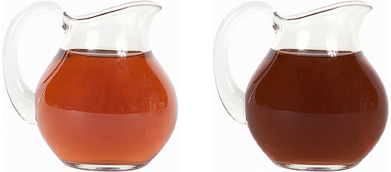Lesson 1
1. Lesson 1
1.7. Explore 3
Module 6: Proportional Reasoning
Sarah and her sister Susan were each making a pitcher of iced tea to drink with supper.

Zedcor Wholly Owned/PhotoObjects.net/Thinkstock
When they put their iced tea on the table, they noticed that the iced tea in Susan’s pitcher was much darker than Sarah’s. Why was this? The following Math Lab will help you to answer this question.
Math Lab
Work through Food Colouring. You will be given the opportunity to perform experiments to assist you in making predictions about changing rates.
Self-Check 4
Answer the following questions based on overall observations that you made from the experiments you completed in the Math Lab.
- When more drops of food colouring were added, did the concentration of food colouring to water increase or decrease? Answer
- When more water was added, did the concentration of food colouring to water increase or decrease? Answer
- Is using a unit rate an appropriate way to compare concentrations here? Why or why not? Answer
When dealing with rates, it is important to use an appropriate rate for the situation. You have looked at examples where a unit rate is most useful, situations where comparing rates per serving size is best, and examples where comparing with a common number for the second term of the rate is the easiest way to compare.
